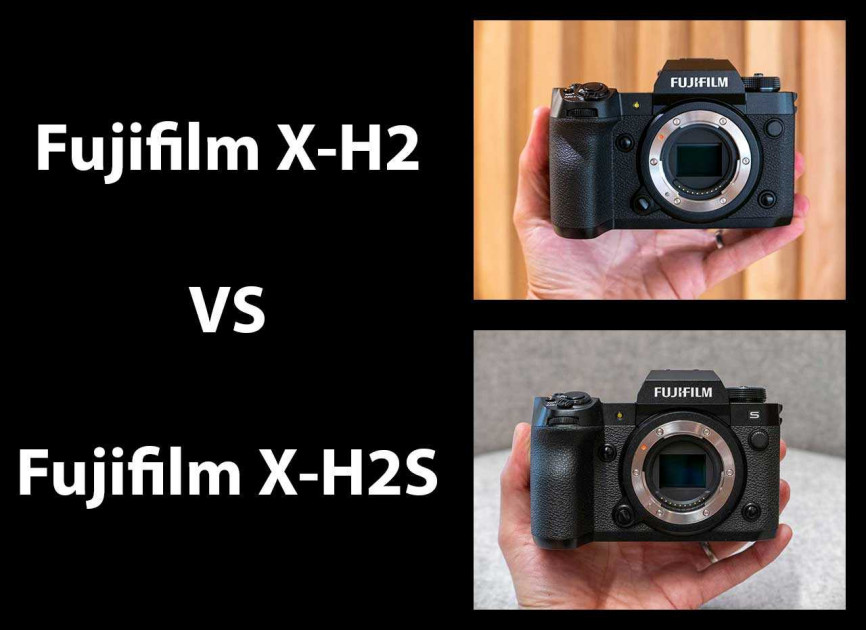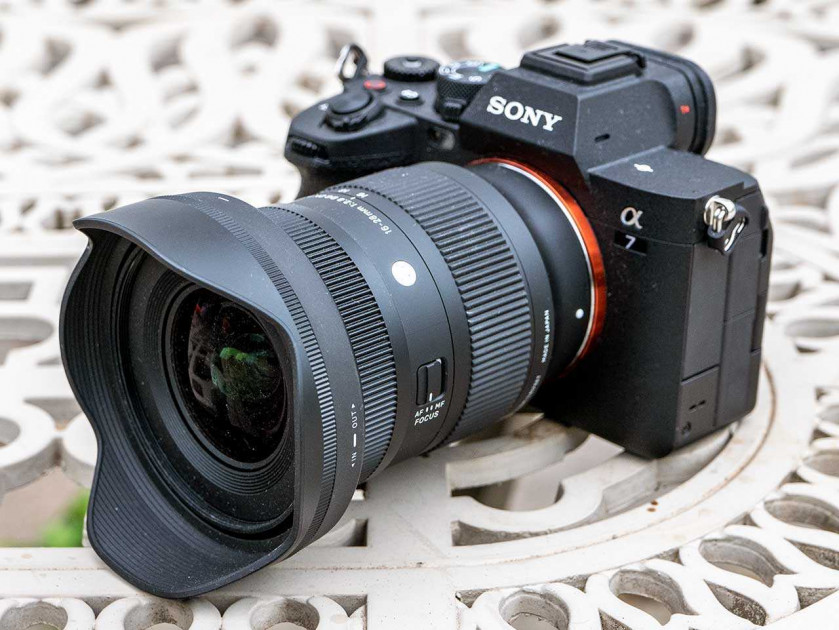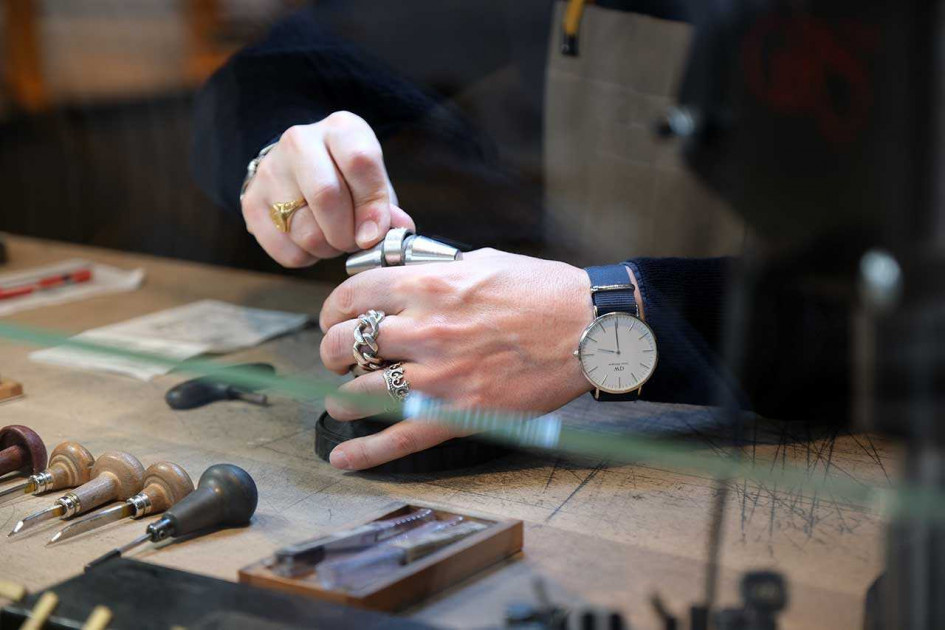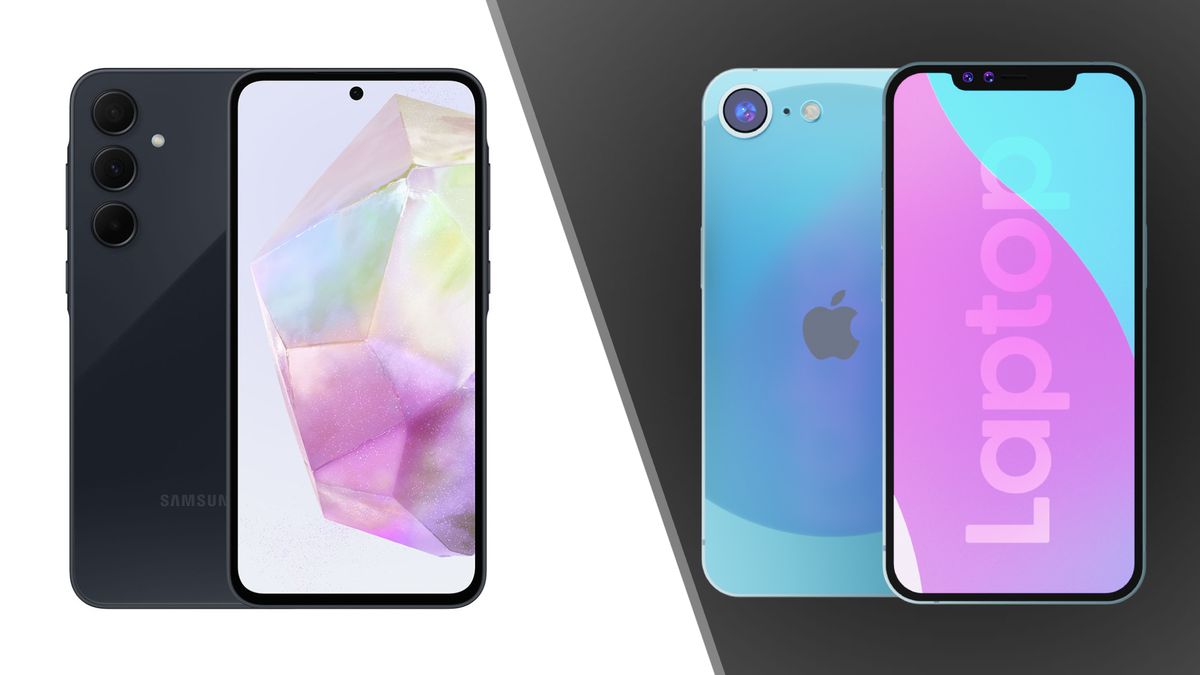

It’s probably fair to say that the original XH1 proved to be one of Fujifilm’s less popular X-Series cameras, but that hasn’t stopped Fujifilm updating it twice for 2022, first with the video-centric X-H2S and now also with the brand new X-H2.
Yes, that’s right, Fuji have chosen to release not one but two successors to the original X-H1, so what exactly does the XH2 offer that the XH2S doesn’t, and vice-versa?
We’re bringing you this in-depth Fujifilm X-H2 vs X-H2S head-to-head comparison to help you choose between these two mirrorless cameras.
You can also read our detailed Fujifilm X-H2S review to find out exactly what we think of that particular camera.
Sensor
The image sensor is the single biggest difference between these two cameras.
Whereas the X-H2S offers the same number of megapixels – 26.1 – as the original X-H1 model, the new X-H2 ups the ante considerably to a brand new 40.2 megapixel sensor, offering much greater resolution.
Also, the sensor technology inside the XH2 is completely different to that found in the X-H2S.
The XHS2 uses the X-Trans CMOS 5 HS sensor, making its debut in the Fuji X-series camera range, with HS standing for High Speed.
This is a stacked sensor design similar to those we’ve seen in other recent flagship cameras, like the Sony Alpha A1, Canon EOS R3, Nikon Z9 and OM Digital O-M1, and it provides a big boost to the camera’s burst shooting, auto-focusing and video capabilities.
By contrast, the XH2 uses a X-Trans CMOS 5 HR sensor, also making its debut in the Fuji X-series camera range, with HS standing for High Resolution.
This is a BSI (back-side illuminated) sensor design that has much more of a focus on detail and resolution than out-and-out speed. It also allows the XH2 to record 8K video, surpassing the XH2S which can only record up to 6K video.
Pixel Shift
The X-H2 is the first ever X-Series camera to feature Pixel Shift Multi-Shot, which delivers 160 megapixel images for the ultimate quality when detail really matters.
Previously only seen on the company’s GFX-branded medium-format cameras, in the Pixel Shift Multi-Shot the camera records 20 frames, shifting the sensor by 0.5 pixels between each frame.
The resulting images are automatically combined into one DNG RAW file, which can be output to a desired file format using suitable RAW processing software.
The X-H2S does not offer this feature.
ISO Speed
The native sensitivity range of the XH2S camera is ISO 160 to ISO 12,800, which can be expanded to ISO 80 to ISO 51,200.
The new XH2 has a lower base sensitivity of ISO 125, which can be expanded down to ISO 64 (the top ISO values are the same as the X-H2S).
Video
The X-H2S offers a better video mode than the X-H2 and is definitely the one to buy if you’re predominantly a videographer, although this new model certainly gives it a run for its money predominantly thanks to its 40 megapixel sensor.
The newer camera offers a highest quality rate of 8K/30p with no crop recorded in 4:2:2 10-bit internally for approximately 160 minutes. The XH2S can’t record at all in 8K because of its lower resolution 26 megapixel sensor, topping out at 6K/30p.
Combined with a compatible HDMI recording device from Atomos or Blackmagic Design, 12-bit RAW video output from the X-H2 can be recorded as Apple ProRes RAW or Blackmagic RAW at resolutions and frame rates of up to 8K and 29.97 frames per second.
The X-H2 also features a digital zoom function that uses the camera’s 40.2MP sensor to deliver up to 2x of digital zoom with little to no loss in resolution, when recording video in 4K.
Thanks to its stacked sensor design, the XH2S offers a faster rolling shutter than the X-H2 (1/180s vs 1/88s in 4K), though, and also offers greater dynamic range (14+ stops versus 13+ on the XH-2). For 8K recording the rolling shutter on the X-H2 is even worse at 1/33s.
Most crucially, the XH2S can record in 4K at up to 120fps, whereas the X-H2 is limited to 4K/60p, which for many videographers will be more important than having 8K recording.
Both cameras can take advantage of a special fan accessory which screws into the back of the camera and improves the maximum recording time from 17 to 51 mins at 40 Celsius.
Autofocus
The new X-H2 has the same hybrid autofocus system with phase detection and and contrast detections points as the X-H2S.
In the Single point AF mode there are up to 425 selectable AF points arranged in a 25×17 grid. Alternatively, the camera can be set to 117 points in a 13×9 grid, and the size of the points can also be varied.
In addition to Single point AF, there’s Zone AF which allows the AF points to be selected in 3×3, 5×5 or 7×7 groups, and
Wide/Tracking AF.
The X-H2 can automatically detect animals, birds, cars, bikes, planes and trains thanks to the X-Processor 5’s AI deep learning capabilities, a feature that no Fujifilm camera other than the XH2S has had before.
Thanks to the 40 megapixel sensor, the XH2 offers a greater number of PDAF points (3.3 million) than the XH2S. Fujifilm say that the new model isn’t quite as fast at tracking moving subjects as the X-H2S, though.
Burst Shooting
Thanks to its X-Processor 5 and stacked sensor, the XH2S can shoot at an incredible 40fps when using the electronic shutter, without any crop at all and completely blackout-free. It also offers fast 15fps continuous shooting speed when using the mechanical shutter.
With its higher resolution sensor, the X-H2 can only shoot a 20fps burst when using the electronic shutter, although it does match the 15fps rate for the mechanical shutter.
Note that all of these impressive burst shooting rates are with continuous phase-detect auto-focus and auto-exposure, rather than being locked at the first frame as on some cameras.
Shutter Speed
The new XH2 improves the fastest shutter speed for the electronic shutter by 2.5 stops, from 1/32000 sec on the XH2S to 1/180000 sec. This allows users to leave the aperture wide open in very bright conditions such as a sunny beach or a ski slope, or to capture a split-second motion.
Body and Design
These two cameras are absolutely identical in terms of their external design, size and weight – everything is the same apart from their nameplates.
So they both differ quite markedly from the original X-H1 by removing a lot of the traditional dials and controls and adding a lot more Function buttons and Custom modes.
Most notably the classic Fujifilm ISO and Shutter Speed dials on top of the XH1 have made way for a PASM dial on these new models.
Fujifilm have added a huge number of Custom modes to the Shooting Mode dial – 7 in fact – to help compensate for these changes, but it still remains to be seen how fans react to what is quite a radical departure from the usual Fujifilm blueprint.
IBIS
The X-H1 was the first ever Fuji mirrorless camera to feature In-Body Image Stabilization (IBIS).
The new XH2 is the fifth Fujifilm camera to feature 5-axis in-body image stabilisation (IBIS), following the original X-H1, X-H2S, X-T4 and X-S10.
Both the X-H2 and X-H2S provide up to a maximum of 7 stops of compensation, the best of any of the current Fujifilm cameras.
Viewfinder
The X-H2 and X-H2S have exactly the same detailed 5.76M-dot OLED electronic viewfinder with large 0.80x magnification and fast 120fps refresh rate.
LCD Screen
The X-H2 and and X-H2S have exactly the same fully articulating, vari-angle, 3-inch LCD screen with 1.62M-dot resolution.
You can flip out the screen to the side, rotate it forwards for easier operation when pointing the camera at yourself, and fold it flat against the back of the camera to stop it from getting scratched.
This free-angle design proves to be very versatile screen for vlogging, movie shooting and photography in general.
Memory Cards
The X-H2 and the X-H2S both have dual memory card slots, just the X-H1, but unlike the X-H1 which has two UHS-II SD card slots, these two new models have one UHS-II SD slot and one CFexpress Type B slot.
So if you want to take advantage of all the speed and video advantages that the XH2 and XH2S offer, you’ll need to invest in some CFexpress Type B memory cards.
Battery Life
The Fujifilm X-H2 and X-H2S both use exactly the same NP-W235 batteries as the X-T4, rather than the smaller capacity NP-W126S battery that the X-H1 used.
This offers a CIPA-rated battery life of up to 720 shots on a single charge in normal mode, with real-life usage yielding even longer life. The X-H1 was rated at only 310 shots.
The XH2 and XH2S can also be powered and charged via a USB-C connection, which is useful if you’re out and about and have a compatible power-bank to plug the camera into.
Price
The new Fujifilm X-H2 is priced at £1899 / $1999 in the UK and USA respectively, making it the second most expensive X-series APS-C sensor camera ever released.
That title goes to the Fujifilm X-H2S, which is priced at £2499 / $2499 body only.
This makes the XH2S a whopping £600 / $500 more expensive than the new XH2, a difference that is primarily driven by the stacked sensor inside it, which is much more costly to manufacture than the BSI sensor found inside the X-H2.
Conclusion
The X-H2 and X-H2S may look absolutely identical, but thanks to their sensor technologies they’re aimed at two quite different types of end user, although the former models 8K mode does muddy the waters a little.
So what do you think? Would you choose the high resolution X-H2 or the high speed X-H2S? Leave a comment below!






